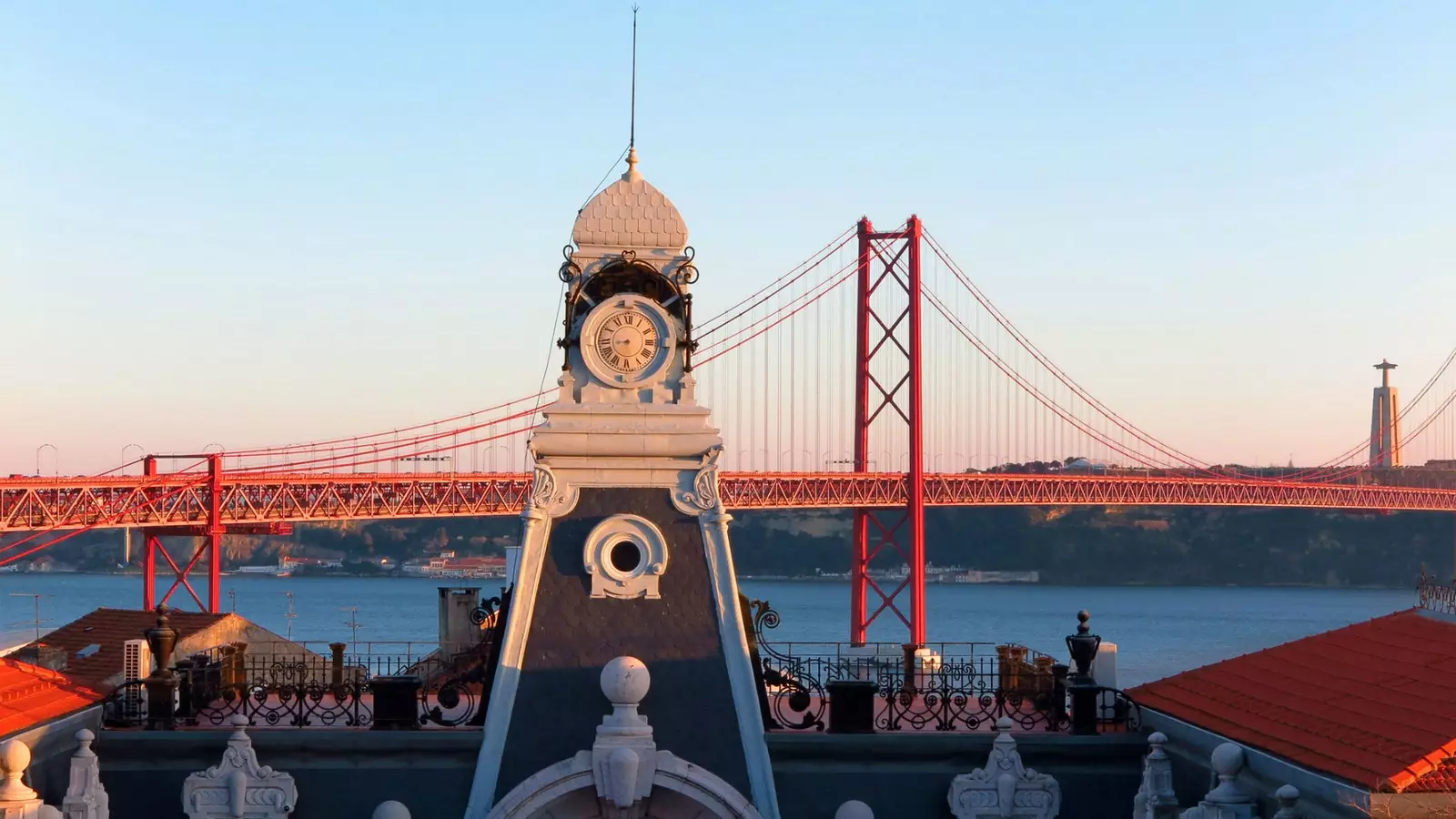
Views from the roof of the old stables of the Pestana Palace Lisboa.
Less than three hours by car separate Porto from Lisbon: a mere 313 kilometers (practically in a straight line) that until very recently represented a world in the mentality of the traveler who chose Portugal as a holiday destination. Lisbon vs. Port. The Duero or the Tagus. As Docas in front of Boavista. Pastéis de Belém against Francesinha.
But finally that duel of the titans is over, why force yourself to choose 'who do you love more' when it is possible to combine both cities on the same trip and thus discover its contrasting characters, compare its peculiarities and create a more complete (and complex!) idea of that Portuguese spirit that we like so much and that has us dazzled.
Of course, we are not going to do it in any way, we will go from palace to palace so that this route that caresses the face of the Iberian Peninsula from the eye to the nose is as idyllic and Portuguese as possible. And there is no hotel group that better treasures and promotes this patriotic spirit than the Pestana Group, which has been recovering and restoring historic buildings for more than 40 years with the intention of adapting them to the tastes and needs of today's traveler without losing an iota of their essence and authenticity.
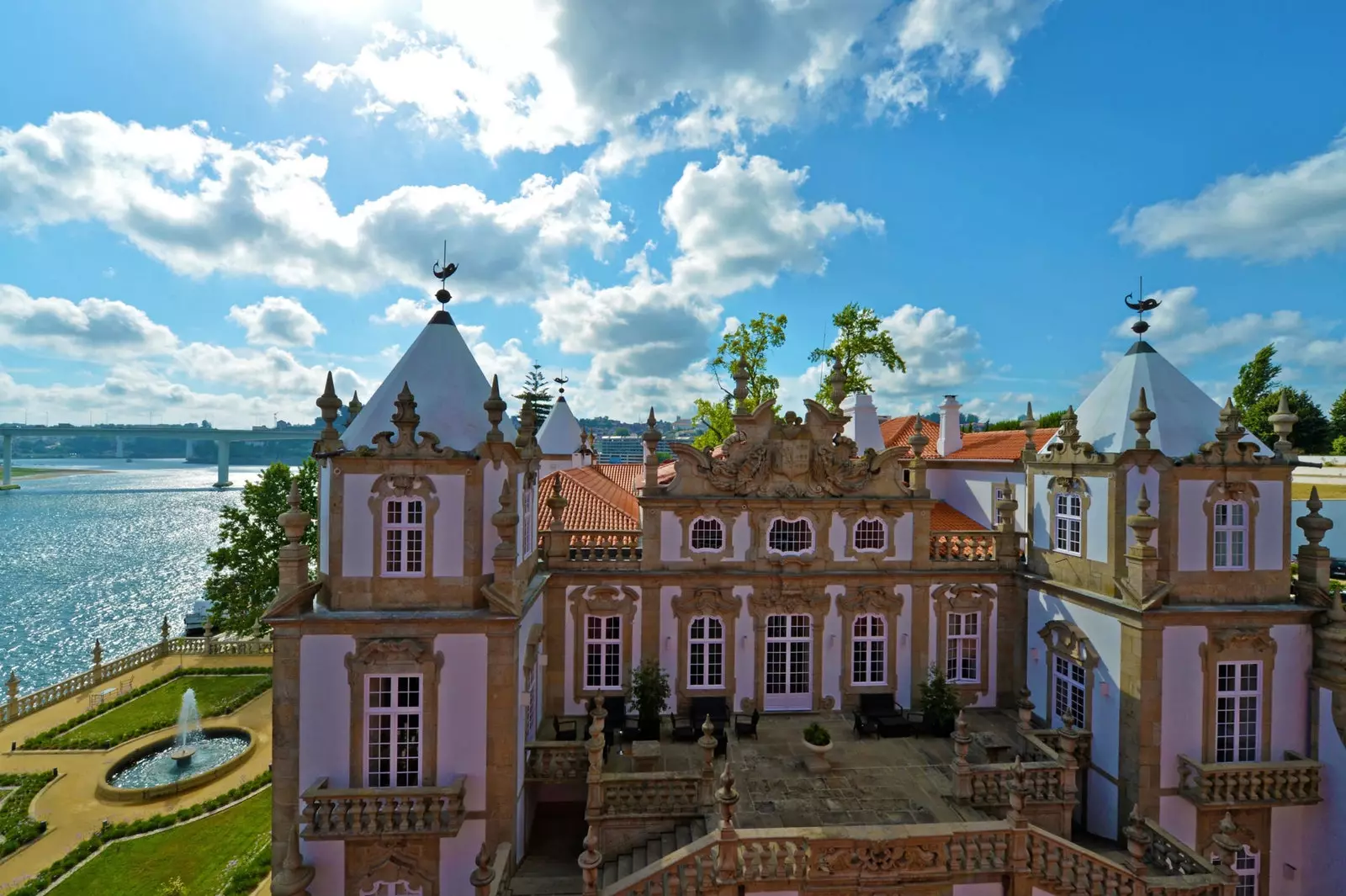
Facade and gardens of the Pestana Palàcio do Freixo, located on the banks of the Duero.
FROM THE NORTH
On the Douro shores and just three kilometers from the historic center of Porto is the Pestana Palàcio do Freixo urban resort. A baroque architecture building declared a National Monument in 1910 whose entrance with arabesque motifs contrasts with the frescoes and paintings of the rest of its rooms, designed in the 18th century by the prestigious architect Nicolau Nasoni.
Outside, its immense and well-kept gardens stand out, although personally I prefer its panoramic swimming pool, from which it is possible to see the costumbrista landscape of the Puerto Rican adolescents bathing in the river while we imagine those past times when the boats used their flow to transport, among other goods, the wine products that arrived from the arrivals of the Duero to the Porto cellars.
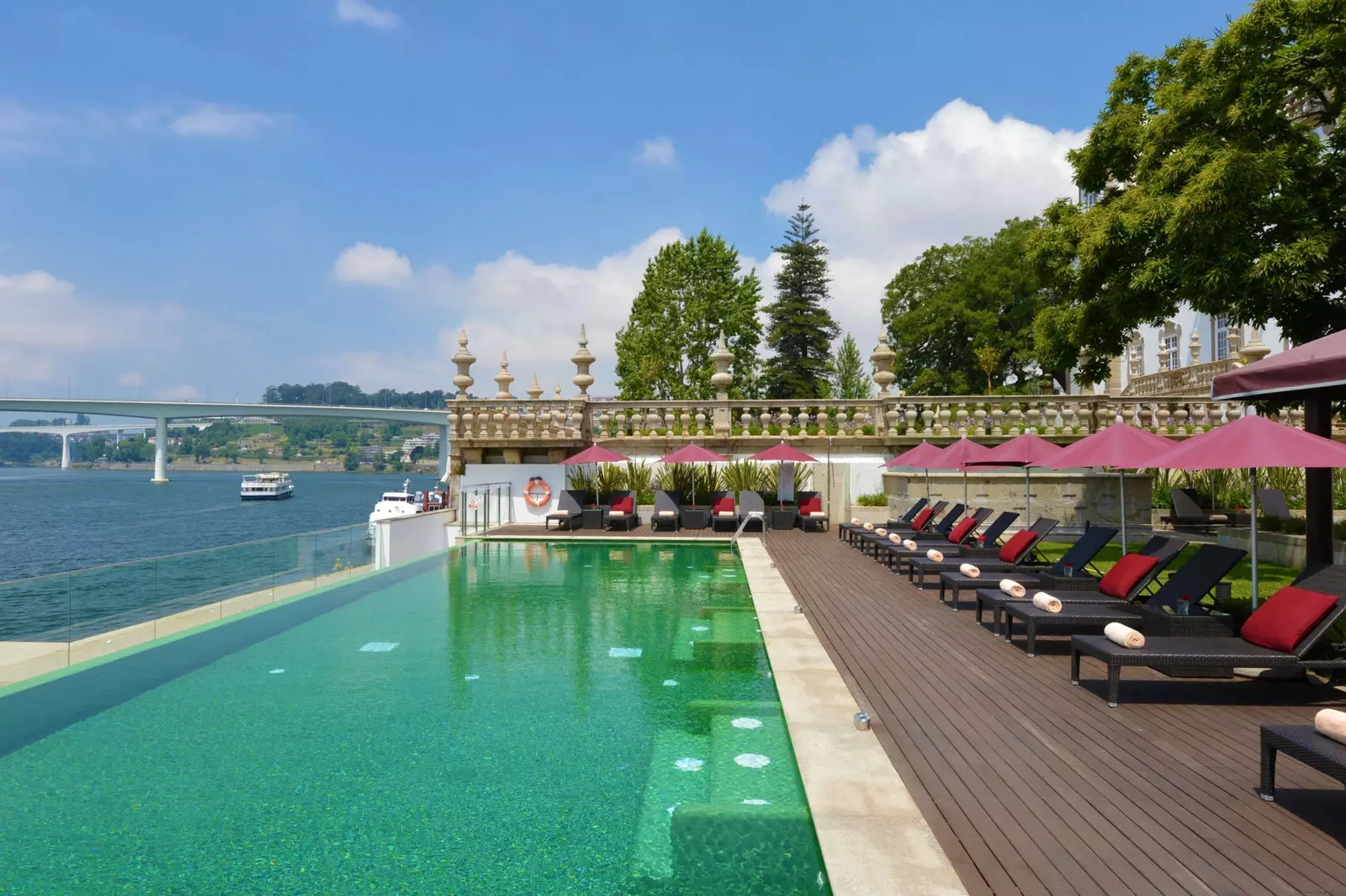
The panoramic pool is one of the claims of the Pestana Palacio do Freixo.
Proof of those prosperous commercial dynamics are the pontoon (converted into a recreation and contemplation area), which was used to carry materials from one shore to another, and the imposing and perfectly preserved brick chimney of the property, since the building annexed to the palace –where the rooms are located– was once a soap factory. Today, the ones we find in the bathrooms are from the Portuguese brand Castelbel Porto.
In its Magic Spa you can let yourself be pampered by its exclusive treatments; at its Nasoni bar, choose as many types of gin and tonics as you like and at its Palatium restaurant, try one of the freshest wild fish in the whole city: from hook to plate!
The Palácio do Freixo has a free shuttle service to reach the central area of Ribeira (a journey of about 20 minutes on foot following the banks of the Douro River), but it is much more idyllic to travel by boat (request this activity at the hotel).
You will sail under the María Pía and Luis I bridges, both designed by Théophile Seyrig, a partner of Gustave Eiffel, before heading down the final stretch of the journey, when you will be amazed by the privileged image of seeing the winery signs face to face of Port wine from Vila Nova de Gaia, on the south bank of the river, and the colored tiled houses of the north bank, which make up the profile of the historic area of Porto, declared World Heritage by UNESCO.
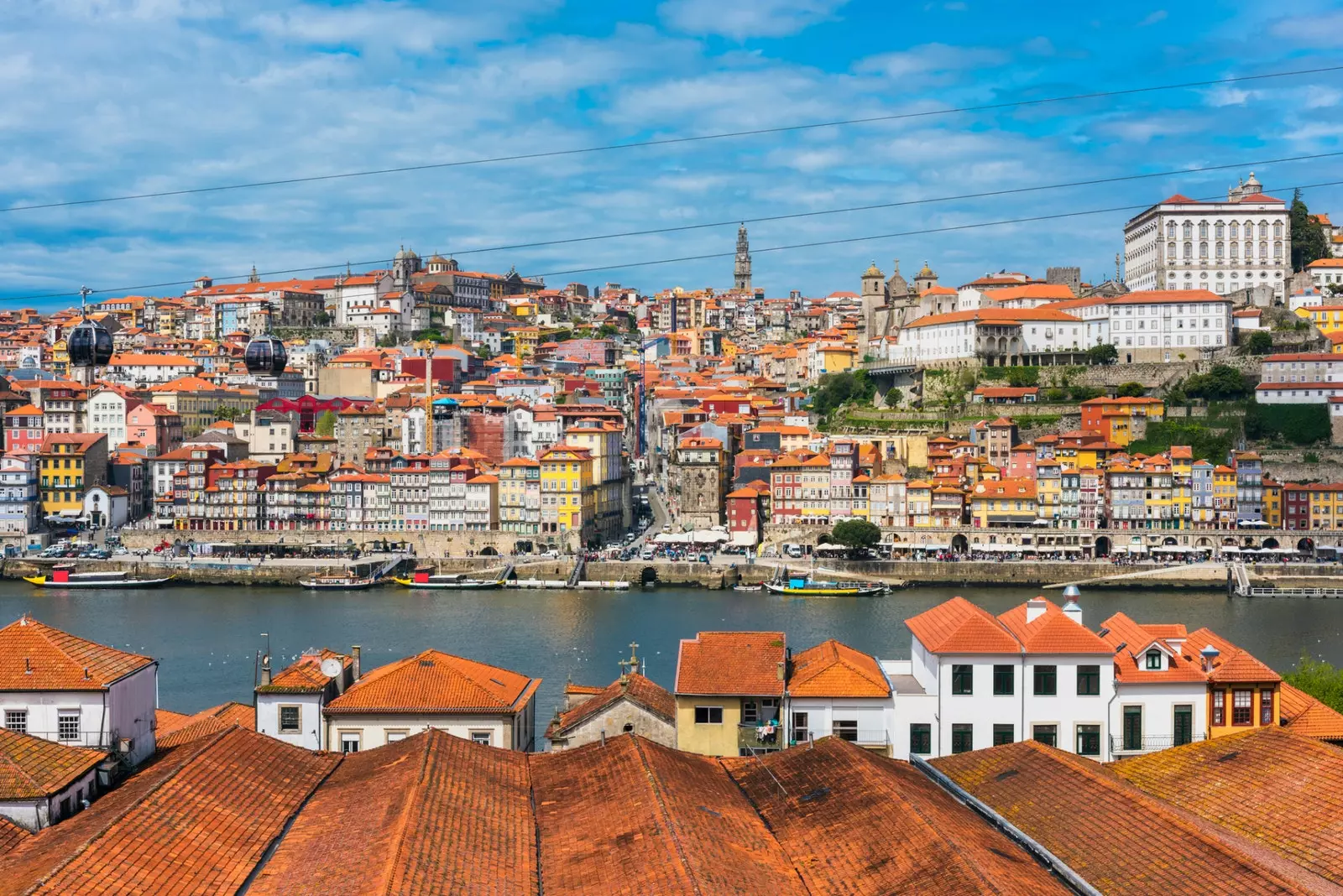
Historic area of Porto photographed from Vila Nova de Gaia.
IN THE TABLE
Ask to disembark in front of the Pestana Vintage Porto, which occupies several of these old houses declared World Heritage Sites. It may not be a palace in this case, but in its Rib Beef & Wine you will find a majar de reyes: excellent cuts of meat in a menu signed by the prestigious chef Rui Martins. You just have to chat with the Portuguese chef for a while to understand that he is passionate and an expert in the art of maceration, which he performs in a controlled manner in special chambers that are practically food laboratories.
Rui assures that don't get too obsessed with beef breeds (no other type of meat is offered in the restaurant), that the true importance lies in a good American cut: entrecôte, sirloin, steak, rabada, RIB Eye...
I, after trying several of his patient creations (28, 60 days of maceration...), I totally agree with this alchemist of meat. I can't fault anyone who is capable of making a cecina as juicy and tasty as León's (and this, gentlemen, are big words).
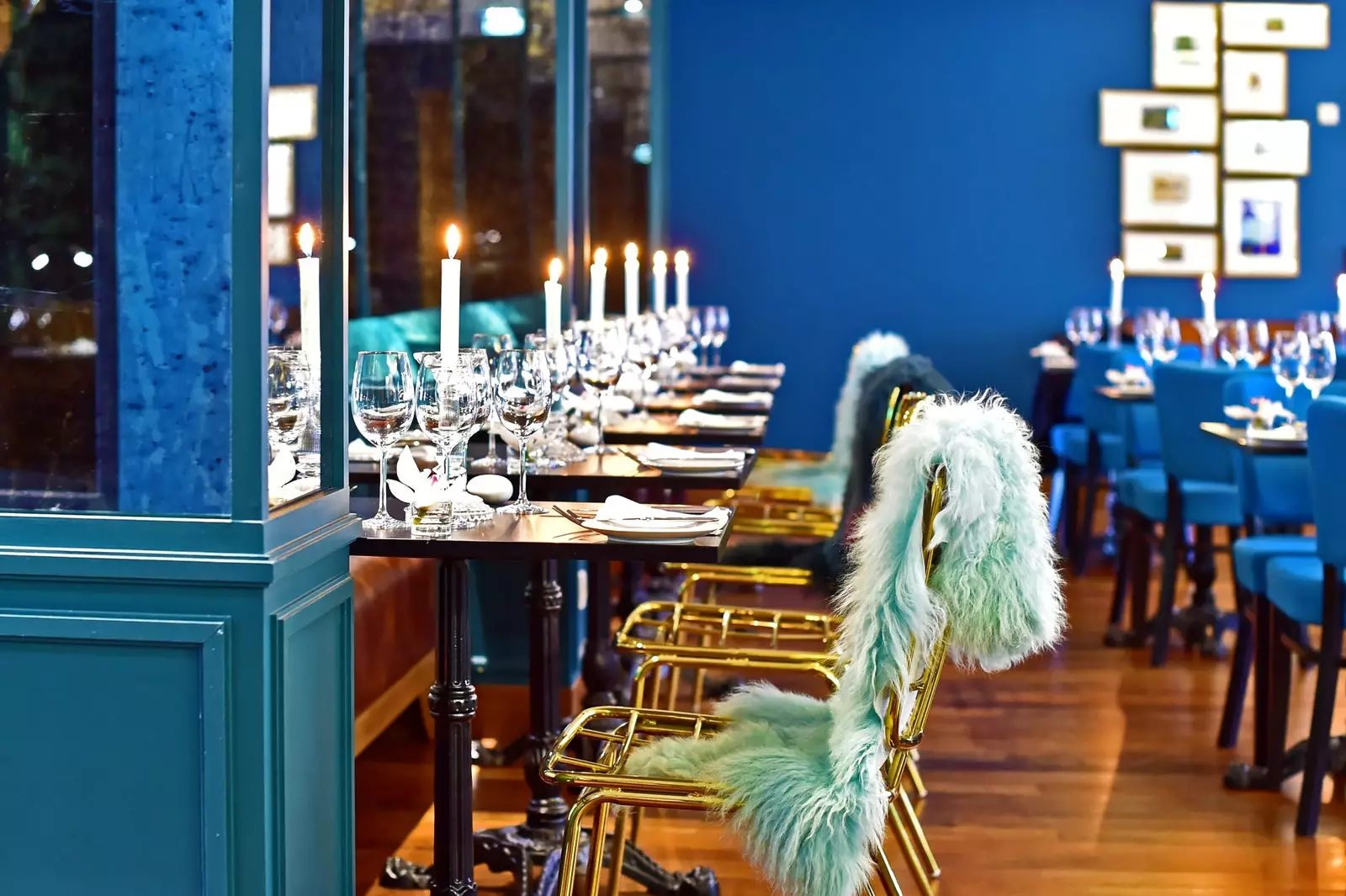
Rib Beef & Wine, the 'place to be' in Porto.
THE TABLE
"O melhor café é o da Brasileira", was the slogan coined by pharmacist Adriano Teles Soares Valle, who managed to introduce in Porto in 1903 the habit of drinking coffee outside the home, specifically in its elegant cafeteria A Brasileira. Because although it seems like a very simple gesture now, back then, it was not even normal to use a simple cup as a container.
A visionary man – he had emigrated to Brazil at the end of the 19th century and had become rich exporting coffee to Portugal – Adriano apparently decided that the best promotion for his product would be to give a bule (teapot) of coffee for the first thirteen years to those who bought a bag of beans from his brand, A Brasileira.
Brazilian coffee, in a cup (a novelty), in a luxurious space decorated with marble moldings and columns? The rest is history... and literature, too, because like all good coffee worth its salt, A Brasileira for many years served as a place for social gatherings, encounter and inspiration for the social, political and cultural elite of the city.
"The idea was to rehabilitate an emblematic cafeteria in the city and add a hotel to it", this is how António Oliveira, former Portuguese coach and owner of the building, always refers to the adventure of recovering this beautiful building in the heart of Porto's Baixa.
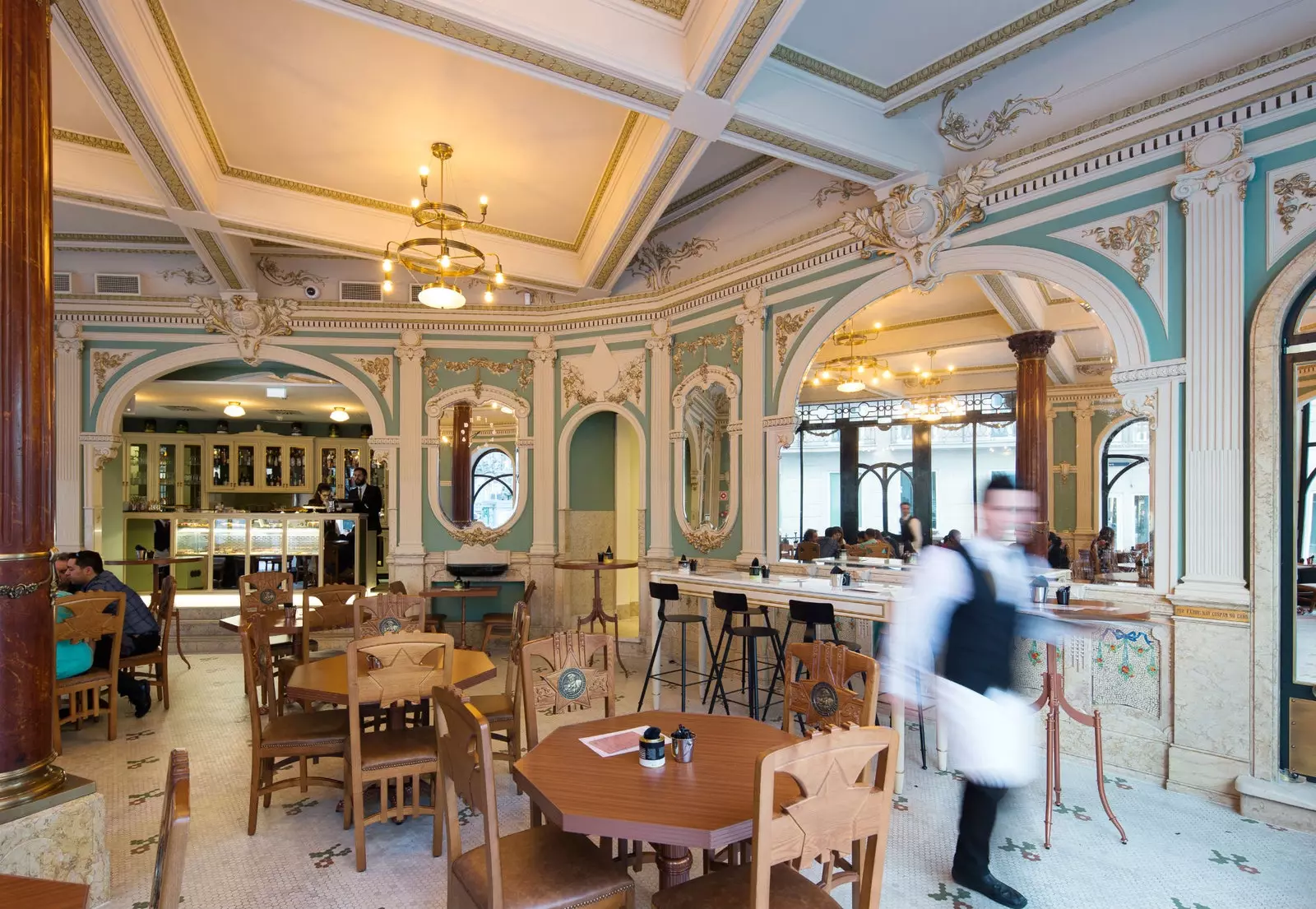
To Brasileira, where the original ornamental details have been respected and enhanced.
The hotel, the most recent 5-star hotel to arrive in the Douro city, is called Pestana Porto A Brasileira and highlights the original elements respected by the Ginestal Machado architecture studio, such as the exterior iron and glass parasol, but also the technology and contemporary interior design of its rooms (each of its six floors is themed alluding to the spices brought by the Portuguese discoveries: coffee, tea, cocoa, pink pepper, cinnamon and anise).
Chef Rui Martins is also in charge of the gastronomic spaces, who in the A Brasileira cafeteria has wanted to recover several traditional Portuguese sweets and in the sophisticated signature restaurant his legs have not shaken when it comes to reinterpret the most traditional recipes of Porto. Essence and flavors of the past with the appearance and technique of the present.
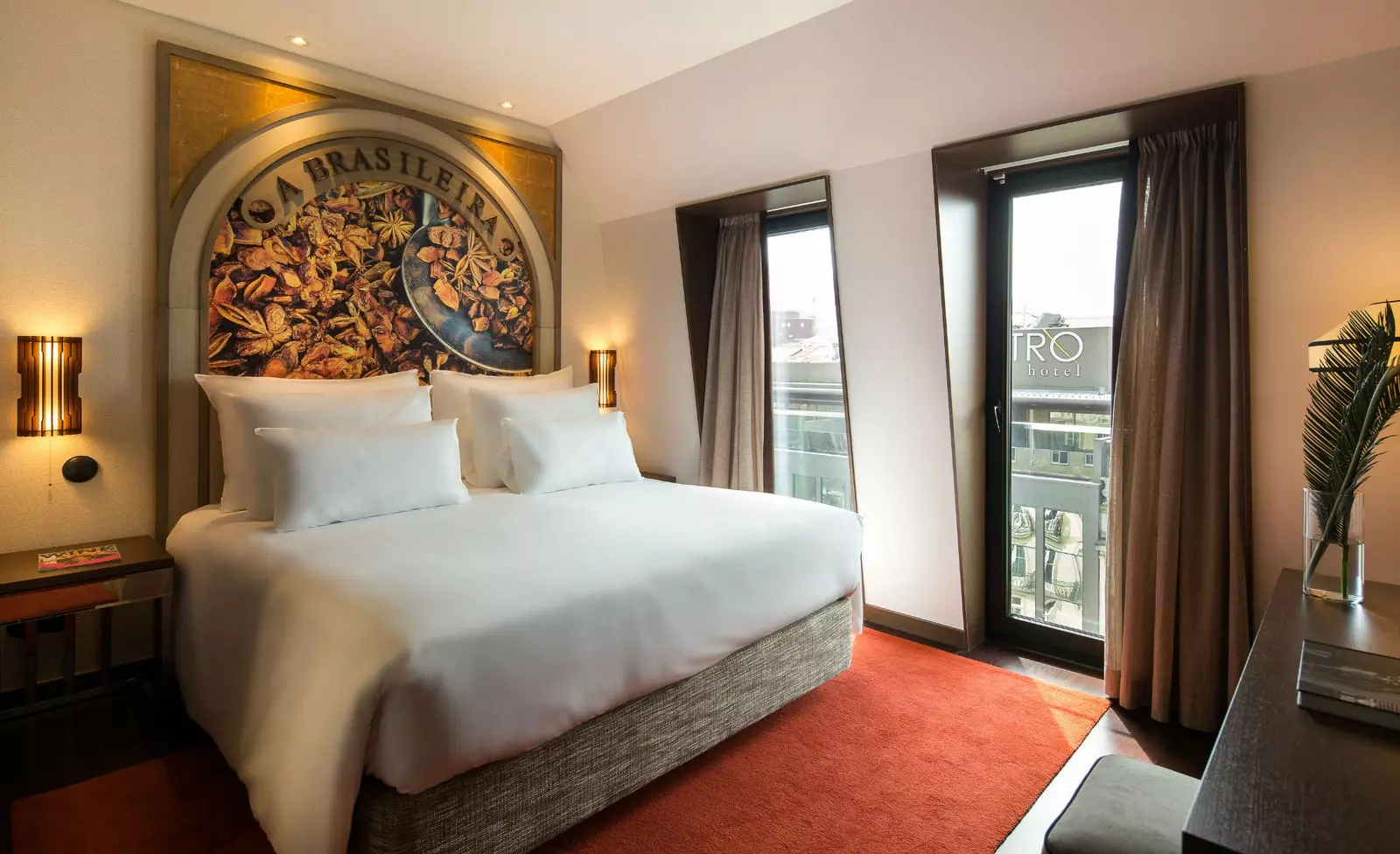
One of the rooms at the Pestana Porto A Brasileira.
PALACE CAPITAL
The Pestana Palace Lisboa occupies one of the most spectacular buildings in the entire city, in fact the Palácio Vale Flor (from the 19th century) **shares a neighborhood with the National Palace of Ajuda, ** which was the residence of the Portuguese royal family after after the Ribeira Palace was destroyed in the 1755 earthquake.
Frescoes, old paintings, moldings, stained glass windows, carvings... nothing is missing to the hotel preferred by singers, actors, politicians and royal houses when they are passing through Lisbon. Well, by the way, or like Madonna, who used it for six months as her place of residence in Portugal (a country for which she 'broke her love' and which she is about to leave to return to the United States ).
Joana Soeiro, director of the hotel, tells me that for them the word "no" does not exist, an exclusive service that almost never collides with the extravagant requests of its guests. That you have to remove all the furniture from a room (even the bed) and leave it clear, because they suddenly disappear, as if by magic.
Of course, the only condition is that none of the structural or decorative elements of the palace have to be changed or altered, which is why the queen of pop had to give up and finally 'settle' for the marble bathroom and canopy of her immense suite room.
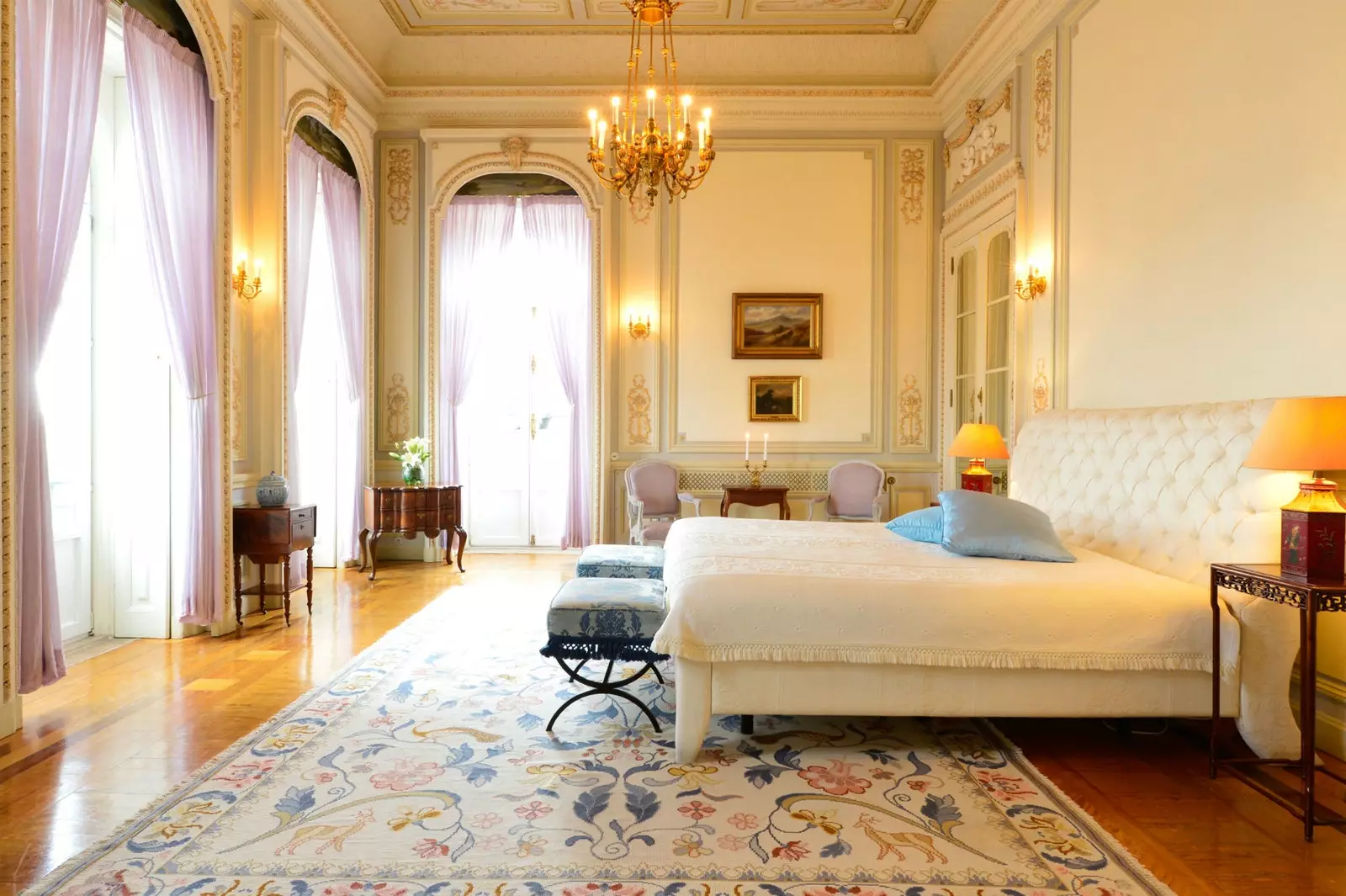
Madonna slept in this bed, but if you decide to remove it, at the Pestana Palace Lisboa they will never tell you "no".
I couldn't find any fault with the wonderful menu prepared at his Valle Flor restaurant (yes, you can cook a whole five-kilo sea bass in salt). Also, unlike Prince, who requested candlelit dinner in the amazing Renascença Room, I kept my eyes peeled for the amazing Renascença Room. exotic beauty of furniture carved with wood directly brought from São Tomé and Príncipe.
The ruse lies in the fact that, at a time when it was forbidden to introduce specimens into the country that could bring some type of plague to Portugal, what was done was have a ship built in the Portuguese colony with this type of exotic wood, boat that upon arrival in Lisbon was dismantled and transformed into coffered ceilings and finely carved furniture.
Special mention deserve their outdoor pool surrounded by greenery and with Asian airs and its spa, an urban wellness refuge with a heated pool included.
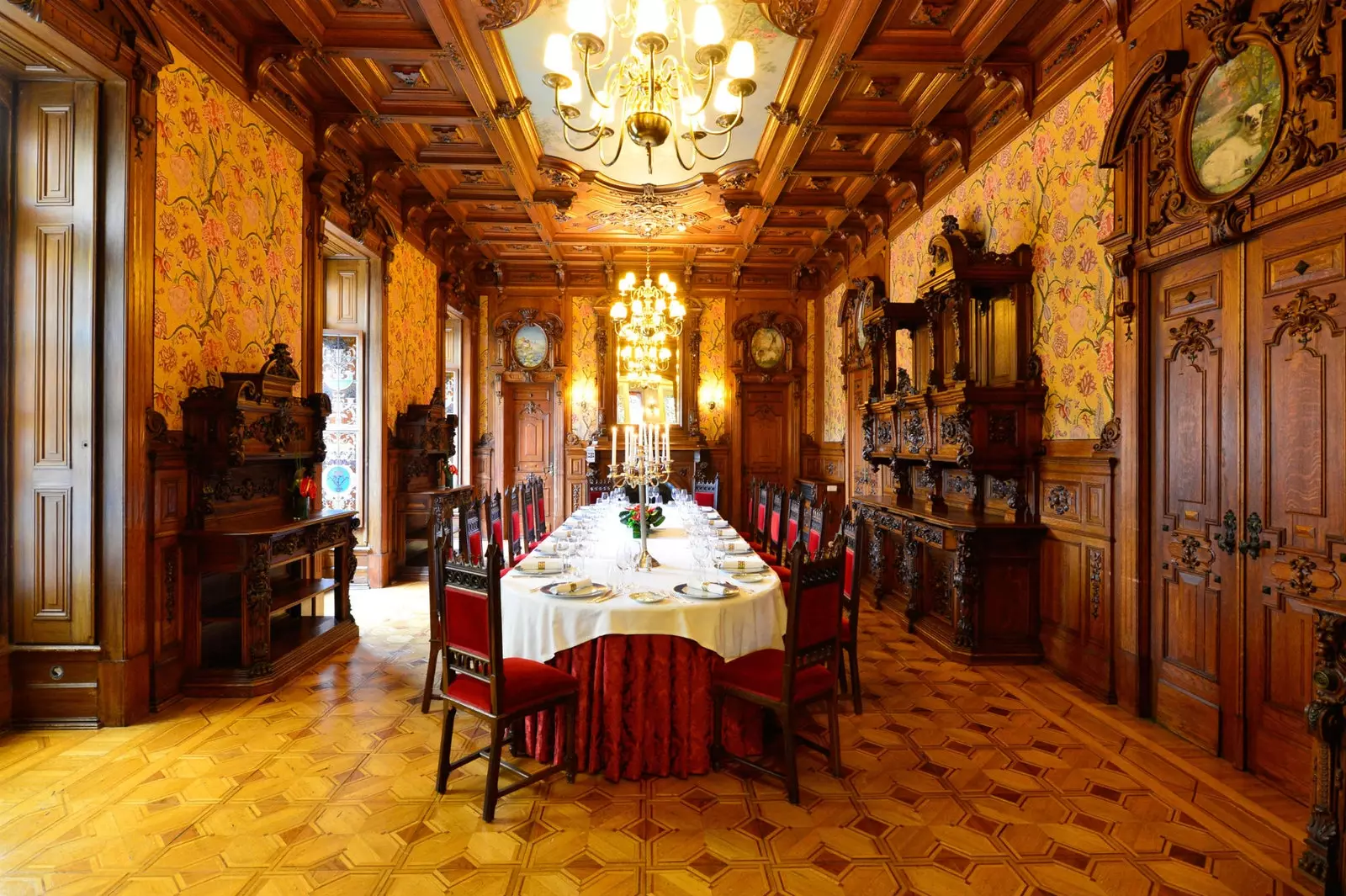
Sumptuous decoration in the Renascença Room of the Pestana Palace Lisboa.
IN THE MIDDLE
In the very Plaza del Comercio, facing the Tagus River, where the kings of Portugal used to reside, the Pousada de Lisboa is located. A Small Luxury Hotels that occupies an old police station and the one that was the headquarters of the Ministry of the Interior in the capital.
draw attention its inner courtyard with a removable dome, a disdained and disused place during these governmental years and that today has become one of the hot spots of the city, since eating or dining there is a true delight... And even more so if we take into account that it is one of the Rib Beef & Wine Lisboa spaces. The other two are a modern cocktail bar under a vaulted ceiling and the outdoor terrace, which rests under the arches of the square. Could there be a better place in the world to feel like a true queen?
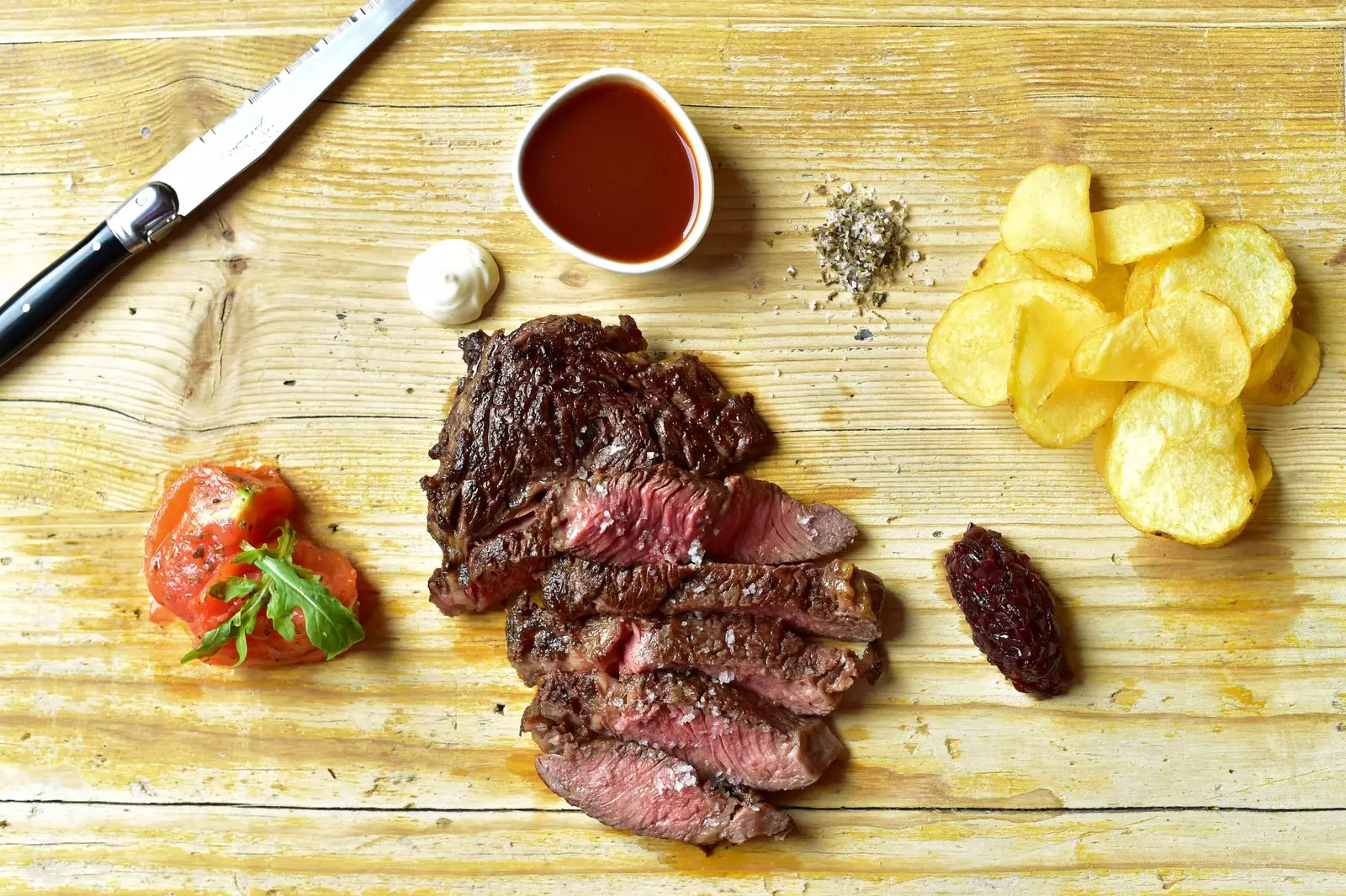
Chef Rui Martins-style meat at Rib Beef & Wine.
